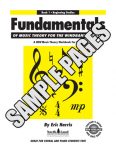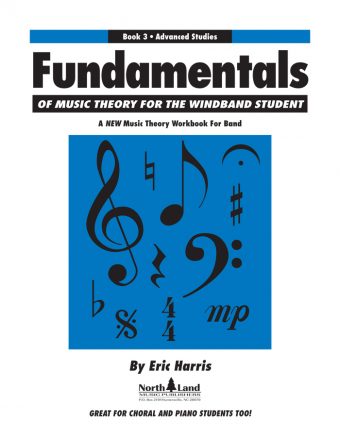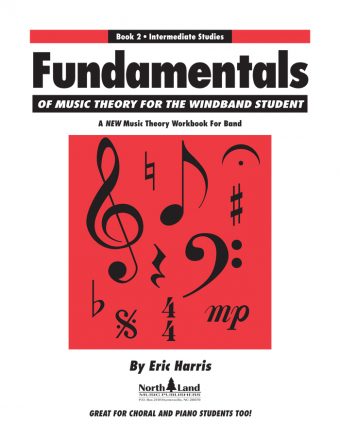Description
01. Book One in the Fundamentals of Music Theory series begins with the assumption that students have no previous musical training. Early exercises are extra easy to ensure that students experience immediate success and become comfortable with written assignments.
02. Lessons are written using simple, easy-to-understand explanations. Each paragraph is numbered for easy reading.
03. Book One and Book Two follow the concept progression of most popular method books. Fundamentals of Music Theory was designed to reinforce through writing the concepts students learn to play each day.
04. Each book in the series is filled with exercises that reinforce rhythm reading in all time signatures. These include:
- Counting Exercises
- Find The Beat Exercises
- Monster Rhythm Reviews
- Note Value Equations
- Basic Conducting Patterns
05. Note naming and note writing exercises are offered in both treble and bass clef. Each clef is introduced in a separate unit. Students can learn the clef for their instrument and then the class can swap and learn the “other” clef. Timed note identification quizzes are included in the Book One Teacher’s Guide and Quiz Book.
06. The Fundamentals of Music Theory series was written with the belief that the piano keyboard is the basic instrument for beginning theory instruction. While no attempt is made to develop students’ playing proficiency, students will learn to use the keyboard as a tool when spelling whole and half steps, naming enharmonics, writing scales and spelling intervals and triads.
Book One contains over thirty pages of keyboard lessons and exercises. The inclusion of this material will be of particular benefit to young percussion students who are developing their mallet playing skills
07. Each unit in each book concludes with a set of Unit Review Questions covering all key points introduced in the preceding lessons.
08. Book One includes an introduction to key signatures. No attempt is made at this point to begin the process of naming keys. Students will learn the order of sharps, the order of flats and their correct placement on the staff in treble and bass clef. Students will also learn to apply key signatures to note naming exercises.
09. Book One concludes with a unit covering the six basic dynamic levels. Students will learn the common abbreviations, the Italian terms and English translations for each dynamic level.
10. Each book in the Fundamentals of Music Theory series concludes with a comprehensive Mastery Test.
Table of Contents
Book One – Beginning Studies
| Lesson 1: Lesson 2: Lesson 3: Lesson 4: Lesson 5: Lesson 6: Lesson 7: Lesson 8: Lesson 9: Lesson 10: Lesson 11: Lesson 12: Lesson 13: Lesson 14: Lesson 15: Lesson 16: Lesson 17: Lesson 18: Lesson 19: Lesson 20: Lesson 21: Lesson 22: Lesson 23: Lesson 24: Lesson 25: Lesson 26: Lesson 27: Lesson 28: Lesson 29: |
The Staff and Notes The Musical Alphabet Beginning Note Values Four-Four Time Rests Music Manuscript – Note Values Music Manuscript – Rest Values Counting Rhythms The Treble Clef The Bass Clef Eighth Notes Music Manuscript – Flags and Beams Two-Four Time Ties Dots Three-Four Time The Piano Keyboard Half Steps Sharps Flats Naturals and Accidentals Enharmonics A Final Review of Half Steps The Dotted-Quarter Note The Anacrusis Introduction to Key Signatures The Order of Sharps The Order of Flats Dynamics |
Mastery Test
Dictation Worksheet
Glossary of Terms with Index Page Numbers




